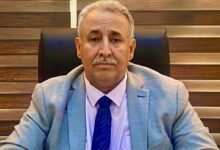The Southern State in the Eyes of International Law Ali Haitham Al-Ghareeb

Stage one: Historical/Legal background of the Southern Cause
As a start, the issue began by granting “The Arab South State” full independence. The general assembly of the United Nations (only 104 nations at that time) issued (7) international resolutions from 1963 to 1967 that granted “The Arab South State” full independence and committed UK with suitable compensations and full support of this newly born state in its pursuit for independence according to The International Declaration of Human Rights (1948) and other international conventions (1966). At that time, the Arab South was categorized as an occupied territory under UK. The main purpose of international resolutions was to enable the Arab South and all other occupied territories all over the world to regain independence.
UK was the authority of occupation in the Arab South that was formed of several Sultanates, emirates and tribes, just like UAE, Oman, India, Syria and other occupied territories. The mission had to be initiated according to the requirements of international laws through providing the state with its components including finance, organizations, national currency, national flag, a new identity and a constitution too. These requirements had to be fulfilled even if the state was under occupation just like all other Arab states.
The call for “Yemenization”, as a whole new identity intruding into the Arab South after 1967, was first heard according to the convention between UK and The National Front for Liberating Occupied South. This made the situation completely different from other states that stabilized quickly like Kuwait, Oman and UAE. This is relatively correct but it didn’t prevent the establishment of an independent southern state that is internationally recognized for several reasons.
Colonel Abdullah Al-Sallal, President of Arab Republic of Yemen at that time and his ministry of foreign affairs recognized the southern state called “People’s Republic of Southern Yemen” and did not seek to conjoin it neither peacefully nor by force. This meant that the Arab South was never a part of the Hashemite Moutawakel Kingdom (1918 – 1922) nor the Yemeni Moutawakel Kingdom (1922 – 1962) and not even the Arab Republic of Yemen (1962 – 1990). All these names for the Yemeni state were on the same geographic territory of Yemen. But the “artificial revolutionary adds” by Arab nationalists and Yemeni nationalists in the south falsified the identity of the Arab South, of course under conspiracy with Iran, Iraq and Russia. The Arab South turned to be Southern Yemen (1967 – 1972) and then Democratic Yemen (1972 – 1990) according to the agenda of the Yemeni Socialist Party and other political parties in the south after Ymenization.
This falsification of the Arab South’s identity helped Ali Abdullah Saleh to seize political power after the declaration of Unity Treaty in 1990. This treaty clearly indicated that all laws, rules, regulations, currencies and armies of both states (north and south) to still active until full inclusions is done two years and a half later. But after that period the north declared war and occupied the south. The southern currency and southern army remained active and even all state’s organizations (legal – executive – parliamentary) kept half-to-half shares. Actually, the Union Treaty expressed clearly the independence of both states. Only the transitive stage, indicated and asserted by the treaty, supported independence of the southern state (1990 – 1994) as full inclusion was never achieved. This enables us to categorize conflicts that followed the union and dissociation in 1994. In 1992, another treaty was signed in Al-Hodeida between Ali Abdullah Saleh, representing the Arab Republic of Yemen, and Ali Salem Al-Beed, representing the People’s Republic of Southern Yemen, with no other parties. According to this treaty, the following terms were declared:
Date of parliamentary elections (April 27th 1993). These elections represented a real referendum by which the southern people declared its will of dissociation. The southern citizens elected their southern representatives (54 out of 56electoral areas) while the northern citizens elected their northern representatives (245 electoral areas). All northern candidates failed in the south and vice versa.
Ali Abdullah Saleh promised to submit all persons accused in killing southern officials in Sanaa to justice and all rights of political parties related to these terrorist groups to be abolished (referring especially to the Yemeni Union for Reform).
All legislations of both states remained active and citizens of the south and north to be free to commit to such laws until the parliament replaced them with other legislations.
According to that treaty, Law of Public Elections was issued according to administrative division (54 electoral areas for the south and 245 for the north).
Actually, Al-Hodeida treaty was recognized by all Yemeni political parties established after the union. Therefore, these parties recognized the representative of north and south who represented both states according to April 22nd 1990’s treaty. It is noteworthy that all political parties practiced political activities only in the north as most founders of these parties belong to the north in addition to being accused for involving in terrorist acts, except for old parties that were blacklisted by both regimens in Sanaa and Adan. This is because these parties arranged their political agendas and internal regulations according to their priorities and not for supporting the union. The same situation apply to justice and executive authorities in the south as only previously issued legislations were active to regulate life and maintain national sovereignty. Therefore, both states exerted their powers as before the union declaration and before April 17th 1994 war and full occupation of the south in July 7th 1994.
The union declaration did not consider the newly born “united” state as a special case due to severe lack of legislations in this treaty (the treaty did not contain any agreed-upon legislations between the Socialist Party and People’s Party). For example, the state’s constitution was not issued to referendum before the declaration and referendum of the constitution came after the declaration in September 1990. The newly established state, as a temporary state, had no terms of reference as it was timed by 30 months and full merge might occur only in case of success. Both states did not succeed in creating a unified state and both peoples lived under two different states. Therefore, the constitution referendum did not mean consensus on the union. Conflicts that started after the union declaration and before the war on the south, clearly indicated that the treaty was null and both states had the right to restore independence according to later treaties signed by both presidents.
The 1967 Declaration of Independence granted for the South clearly stated that no individual, party or authority has the right to give up the state’s sovereignty and independence. Even political regimen of parties had the right to call for referendum concerning the giving up of national sovereignty, independence or even union with another foreign political regimen as UN recognizes only states not its political regimens. In 1967, UN recognized the Southern State as an independent sovereign state regardless its political regimen.
Actually, the Yemeni Nationality was not granted for Yemenis residing the Arab South till 1978. In addition, Sanaa didn’t grant Yemeni nationality for any southern citizen. Instead, for verification of identity citizens passed through national security and granted a certified visa as “Southern Resident”. After that date, only Yemenis residing in the south were granted Yemeni nationality in addition to all Arabs and foreigners residing permanently there as it was not abolished with practical abolishing of colonization in 1967. But Yemen (the north) kept granting southern citizens “resident” visa with no other nationality than his own southern one till 1990.
Nationalist movements drew the newly established southern state to violate the declaration of independence itself in addition to several other treaties among southern national action groups through suppressive exclusionary policy and restless efforts for Ymenization of the south. Mr. Mohamed Salem Basandwah indicated that these powers and ideologies succeeded in Yemenizing the south through documents, letters and slogans but never succeeded in doing so demographically or practically, especially during the regimen of Kahtan who refused to link the south with international socialist movement, Ali Nasser Mohamed’s regimen who insisted on “closing the file of the National Front” nor in Ali Salem Al-Beed’s regimen who declared an exclusively southern government in 1994.
Through Yemenizing the name of the southern state, Yemeni political parties sought to establish itself in the southern political decision-making process under an official local and international coverage. They succeeded in providing themselves with international coverage and worked on providing Sanaa with information and secrets of the southern state. This was admitted by most members of the political office at the central committee of the Yemeni Socialist Party after occupation of the south in 1994.
Party politics of Yemeni political parties in the south committed severe crimes and violated the union treaty and the state’s sovereignty. This makes them liable to national and international laws.






